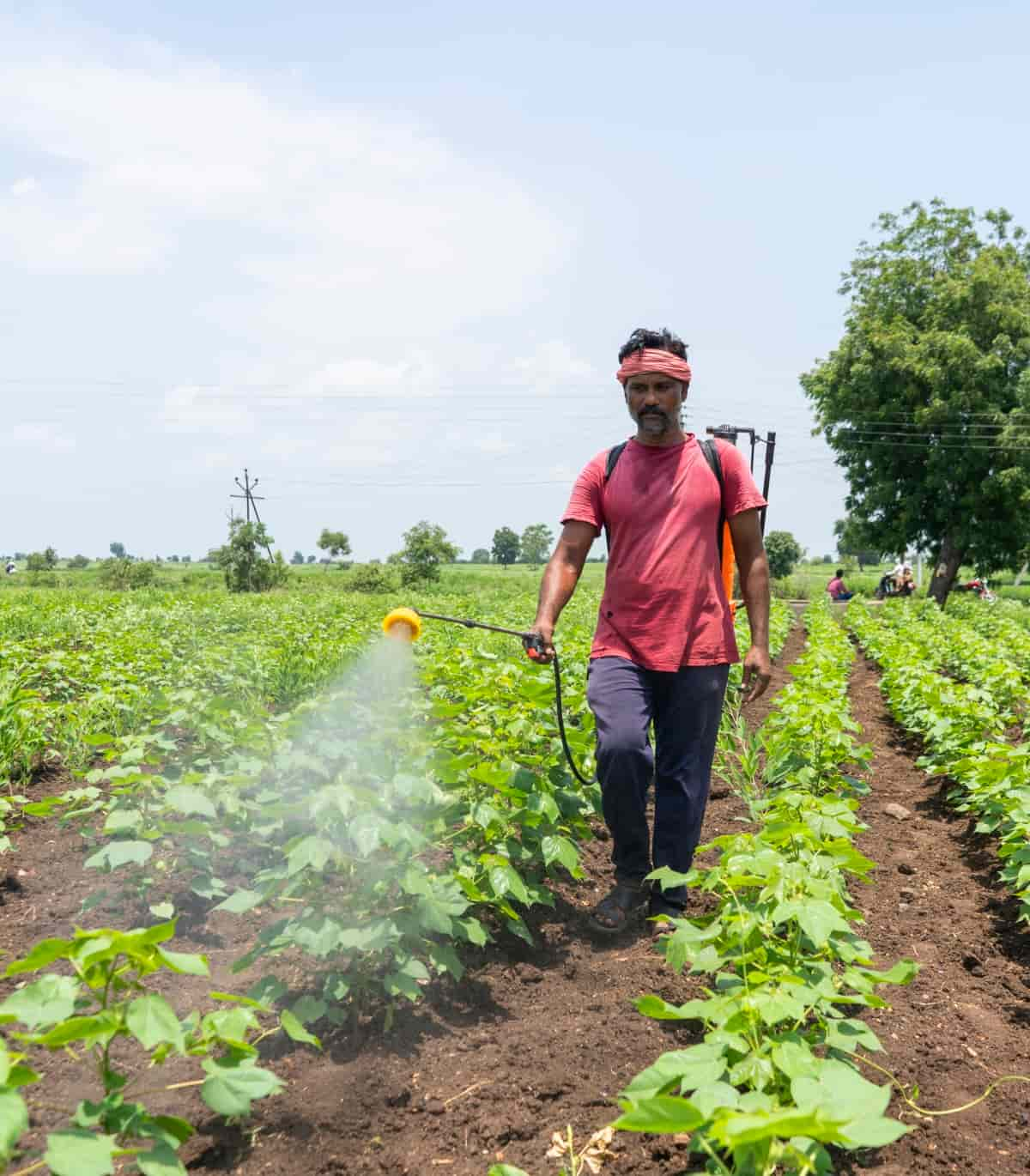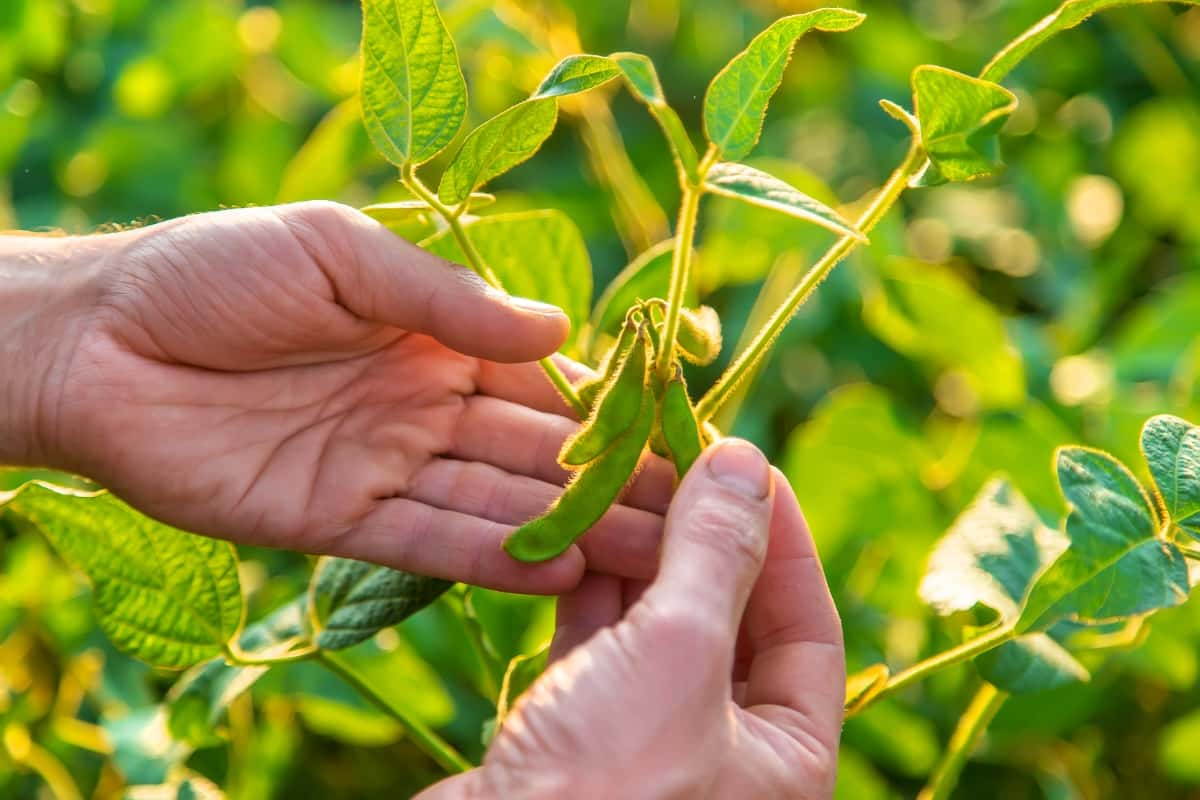Pink bollworm (Pectinophora gossypiella) is a serious cotton pest that causes significant yield losses and quality reduction. The larvae of this pest bore into the cotton bolls, feed on the seeds and lint, resulting in rosette flowers, premature boll opening, lint damage, and seed destruction.
The adult moths are nocturnal and lay eggs on the squares, flowers, or bolls of cotton plants. In this article, we will discuss the impact of pink bollworm on crop health, the chemical control strategies for different crops, and the integrated pest management approach that combines chemical and non-chemical methods.
Chemical Control Measures for Pink Bollworm
Chemical Control Measures
Chemical control is one of the methods used to manage pink bollworm infestations. However, it should be integrated with other cultural, biological, and mechanical practices to achieve effective and sustainable results. Selecting the right chemical for pink bollworm control is a complex decision influenced by crop type, infestation stage, product efficacy, safety, and availability.
Commonly used active ingredients include chlorpyrifos, esfenvalerate, indoxacarb, gamma-cyhalothrin, lambda-cyhalothrin, and bifenthrin. These belong to various insecticide classes like organophosphates, pyrethroids, and oxadiazines, each with a unique action mode, such as inhibiting acetylcholinesterase, disrupting sodium channels, or blocking nicotinic acetylcholine receptors.
Application methods vary foliar sprays, seed treatments, or soil drenches tailored to the crop and product—timing and frequency hinge on pest population dynamics, crop development stages, and weather conditions. The economic threshold level (ETL) is crucial for determining the need for chemical intervention. In cotton, for instance, the ETL for pink bollworm is identified as 10% damaged flowers/bolls or an 8-month catch per pheromone trap nightly over three consecutive days, balancing the cost of control against the value of damage prevention.
Cotton Pink Bollworm: Chemical Treatments and Control
Cotton is one of the most important crops affected by pink bollworm. In India, cotton is grown in three distinct agro-ecological zones: Northern (Punjab, Haryana, and Rajasthan), Central (Gujarat, Maharashtra, and Madhya Pradesh), and Southern (Andhra Pradesh, Tamil Nadu, and Karnataka). Each zone has different climatic conditions, cropping patterns, and pest problems. Therefore, tailored chemical treatments are required for each zone. The economic threshold level (ETL) for pink bollworms is 10% damaged flowers, 10% damaged green bolls, or eight months per pheromone trap per night for three consecutive days.
Based on the ETL, foliar application of insecticides such as chlorpyrifos, esfenvalerate, indoxacarb, gamma-cyhalothrin, lambda-cyhalothrin, or bifenthrin can be done to kill the adult moths and prevent egg laying. The insecticides should be applied in the evening hours when the moths are active and should be rotated to avoid resistance development. No treatment is recommended against larvae as they are protected inside the bolls.
Other crops: Pink bollworm can also infest other crops such as okra, pigeon pea, soybean, castor, and sesame. The ETL for these crops is 5% damaged pods or five moths per pheromone trap per night for three consecutive days. The same insecticides as mentioned above can be used for these crops as well.

The Impact of Pink Bollworm on Crop Health
The pink bollworm is a nocturnal moth that lays eggs on the surface or under the calyx of green bolls. The eggs hatch into white larvae that bore into the bolls and feed on the seeds and lint. The larvae have distinctive pink bands on their back and dark brown heads. They can move from one seed to another through the septum, causing extensive damage to the boll. The infested bolls may open prematurely, exposing the lint to fungal growth and staining. The damaged seeds may also reduce the germination rate if used for sowing.
The pink bollworm can cause up to 33% crop loss in cotton, based on the level of infestation, the susceptibility of the variety. The pest can also affect other crops, such as soybean, corn, and fruit trees, where it feeds on the seeds or fruits, reducing their quality and market value. The pink bollworm can also transmit diseases such as bacterial blight and verticillium wilt to cotton plants.
Managing Pink Bollworm in Soybean Crops: Effective Chemicals
Pink bollworm is a pest that can damage soybean seeds and pods, reducing yield and quality. It can also transmit diseases like bacterial pustule and pod and stem blight. Chemical control works well to get rid of pink bollworms in soybean crops. The chemicals that work best are chlorpyrifos 20 EC, esfenvalerate 5 EC, indoxacarb 14.5 SC, gamma-cyhalothrin 4.9 CS, lambda-cyhalothrin 5 EC, and bifenthrin 10 EC.
In case you missed it: Everything You Want to Know about Habanero Peppers: Origin, Benefits, Scoville Heat Units and Growing

These chemicals should be applied as foliar sprays at 15-20-day intervals, depending on the pest population and the ETL. In addition to chemical control, cultural practices like deep summer plowing, removal of alternate hosts, field sanitation, early sowing, short-duration varieties, trap crops, intercropping, crop rotation, and timely harvesting can also help reduce pink bollworm infestation.
Corn Crop Against Pink Bollworm: Chemical Solutions
Corn is another crop that can be affected by pink bollworm. The pest can feed on the kernels and silks of corn, reducing the yield and quality of the crop. The pest can also transmit diseases such as ear rot and stalk rot to corn plants. Chemical control is one of the effective methods to manage pink bollworm in corn crops.
In case you missed it: According to Experts 10 Differences Between Greek and Italian Oregano

The choice of chemicals depends on the availability, efficacy, and safety of the product. Some of the recommended chemicals for pink bollworm control in corn are chlorpyrifos 20 EC (1.5 ml/l), esfenvalerate 5 EC (0.5 ml/l), indoxacarb 14.5 SC (0.75 ml/l), gamma-cyhalothrin 4.9 CS (0.5 ml/l), lambda-cyhalothrin 5 EC (0.5 ml/l) and bifenthrin 10 EC (0.5 ml/l). These chemicals should be applied as foliar sprays at 15-20-day intervals, depending on the pest population and the ETL.
Chemical Control in Orchards: Tackling Pink Bollworm in Fruit Crops
Pink bollworms can also attack fruit crops such as apples, pears, peaches, and plums. The pests can feed on the fruits and seeds of these crops, reducing their quality and market value. The pest can also transmit diseases such as brown rot and scab to fruit trees.
In case you missed it: 8 Best Fertilizers to Increase Tomato Fruit Size, Yield, and Taste

Chemical control is one of the effective methods to manage pink bollworm in fruit crops. The choice of chemicals depends on the availability, efficacy, and safety of the product. Some of the recommended chemicals for pink bollworm control in fruit crops are chlorpyrifos 20 EC (1-2 ml/l), esfenvalerate 5 EC (0.25-0.50 ml/l), indoxacarb 14.5 SC (0.50-1 ml/l), gamma-cyhalothrin 4.9 CS (0.25-0.50 ml/l).
Best Chemical Control Measures for Pink Bollworm
| Cotton | Emamectin benzoate | 5% SG @ 80 g/ha |
| Cotton | Chlorantraniliprole | 18.5% SC @ 150 ml/ha |
| Okra | Spinosad | 45% SC @ 60 ml/ha |
| Okra | Indoxacarb | 14.5% SC @ 75 ml/ha |
| Pigeon pea | Carbaryl | 50% WP @ 1 kg/ha |
| Pigeon pea | Quinalphos | 25% EC @ 2 l/ha |
| Soybean | Bacillus thuringiensis | 0.5% AS @ 1 kg/ha |
| Soybean | Flubendiamide | 39.35% SC @ 100 ml/ha |
| Tomato | Novaluron | 10% EC @ 150 ml/ha |
| Tomato | Chlorfenapyr | 10% SC @ 150 ml/ha |
Conclusion
Managing pink bollworms across various crops requires a strategic approach to chemical control. Selecting appropriate insecticides, considering factors like crop type, infestation stage, and environmental impact, is crucial. Effective management hinges on understanding pest dynamics and applying treatments like foliar sprays, or soil drenches at optimal times, guided by the economic threshold level.
- Feed Your Flock for Less: Top 10 Tips to Save on Chicken Feed
- Ultimate Guide to Ossabaw Island Hog: Breeding, Raising, Diet, and Care
- Hatching Answers: The Top 10 Reasons Your Chickens Aren’t Laying Eggs
- Eggs and Economics: Breaking Down the Cost of Raising Backyard Chickens
- Defend Your Greens: Proven Methods to Keep Iguanas Out of Your Garden
- Ultimate Guide to Cinnamon Queen Chicken: A Comprehensive Guide for Beginners
- Ultimate Guide to California Tan Chicken: Breeding, Raising, Diet, Egg-Production and Care
- Ultimate Guide to Marsh Daisy Chicken: Breeding, Raising, Diet, and Care
- 10 Types of Chicken Farming Businesses You Can Start for Profits